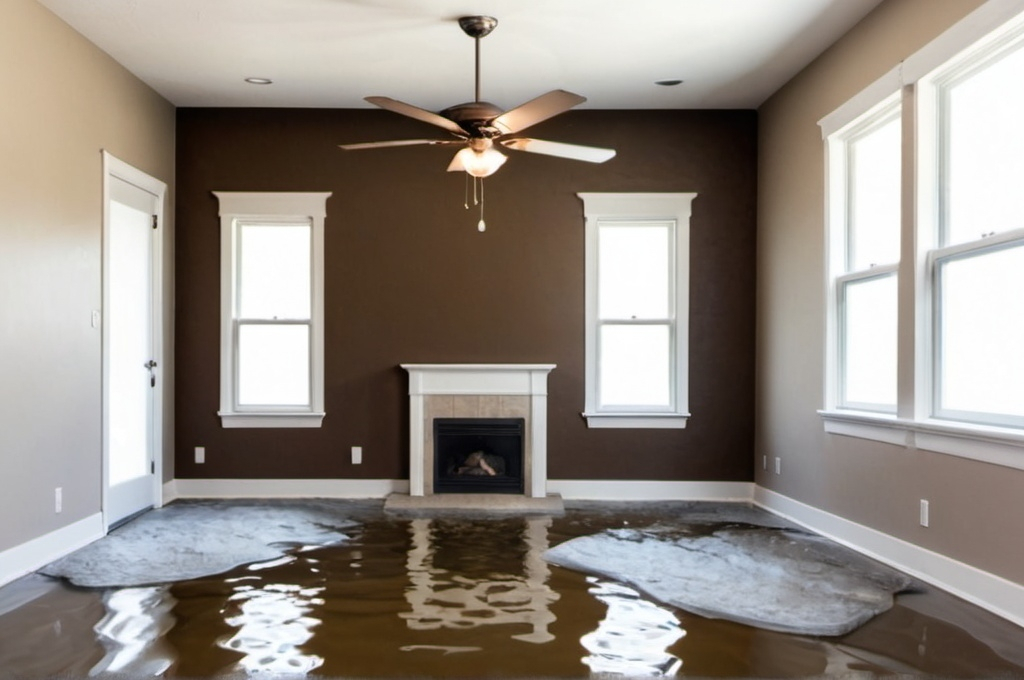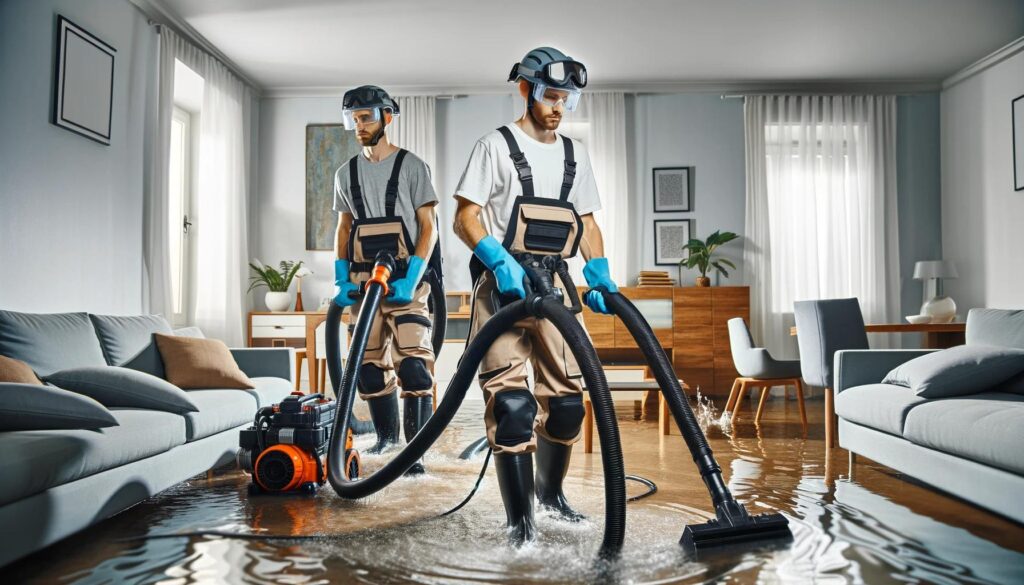In the wake of flooding and other water-related disasters, the role of restoration companies extends far beyond repairing damaged properties. These companies are crucial in fostering community resilience, helping communities not only recover but also prepare for future challenges. This article explores how restoration companies contribute to community resilience, highlighting the strategies and initiatives that make a significant impact.
Immediate Response and Support
When disaster strikes, the immediate response is critical. Restoration companies provide rapid, on-the-ground support that is essential for minimizing damage and starting the recovery process. Their quick action helps to stabilize affected areas, prevent further deterioration, and offer reassurance to community members.
Emergency Services
Restoration companies offer 24/7 emergency services, ensuring that help is available at any hour. This swift response can significantly reduce the extent of water damage, saving properties from further harm and making the recovery process faster and more efficient. The presence of trained professionals in the immediate aftermath of a disaster helps to create a sense of safety and control among affected residents and business owners, who may otherwise feel overwhelmed and helpless.
Emergency services typically include:
- Water Extraction: Removing standing water quickly to prevent further damage.
- Temporary Repairs: Implementing quick fixes to stop leaks and stabilize structures.
- Damage Assessment: Conducting an initial evaluation to determine the extent of the damage and plan the next steps.
Temporary Accommodations
In severe cases, where homes or businesses are uninhabitable, restoration companies often assist in arranging temporary accommodations. This support is vital for displaced residents and business owners, providing them with a safe place to stay while restoration work is underway. Ensuring that those affected by water damage have secure, temporary housing is a critical part of the recovery process, allowing them to focus on rebuilding their lives without the added stress of finding a place to stay.
Temporary accommodation support may include:
- Arranging Hotel Stays: Partnering with local hotels to provide short-term housing.
- Coordinating with Emergency Shelters: Working with community organizations to secure shelter space.
- Providing Rental Assistance: Helping clients find and finance longer-term rental options if needed.
Comprehensive Restoration and Recovery
Restoration companies are equipped with the expertise and technology to handle all aspects of water damage restoration. Their comprehensive services ensure that properties are not only restored to their pre-damage state but are also fortified against future incidents.
Advanced Technology
Using advanced technology such as industrial-grade dehumidifiers, air movers, and moisture meters, restoration companies can effectively dry and restore properties. These technologies help in preventing mold growth and structural damage, ensuring long-term safety and stability. Cutting-edge tools and equipment allow restoration professionals to work more efficiently and achieve better results than would be possible with conventional methods.
Some of the advanced technologies used include:
- Infrared Cameras: Detecting hidden moisture behind walls and under floors.
- High-Capacity Dehumidifiers: Removing moisture from the air and speeding up the drying process.
- Air Scrubbers: Purifying the air and removing contaminants that may have been introduced by water damage.
Skilled Workforce
Restoration professionals are highly trained and certified, bringing a wealth of knowledge to every project. Their expertise allows them to tackle complex restoration challenges, from structural repairs to mold remediation, ensuring thorough and high-quality work. The skill and experience of the workforce are crucial in delivering effective restoration services that meet the specific needs of each situation.
Key areas of expertise include:
- Water Damage Assessment: Identifying the extent of water infiltration and its impact on the property.
- Structural Repairs: Rebuilding and reinforcing damaged structures to restore integrity and safety.
- Mold Remediation: Identifying, removing, and preventing mold growth to protect health and property.
Education and Preparedness
A key aspect of building community resilience is education. Restoration companies play a pivotal role in educating community members about water damage prevention, emergency preparedness, and the steps to take during a disaster. By empowering individuals with knowledge and practical skills, restoration companies help to reduce the overall impact of future disasters.
Workshops and Seminars
Many restoration companies host workshops and seminars focused on disaster preparedness. These events provide valuable information on topics such as creating emergency kits, developing evacuation plans, and understanding the insurance claims process. By offering these educational opportunities, restoration companies help to ensure that community members are better prepared to respond to water damage and other emergencies.
Typical workshop topics include:
- Emergency Kit Preparation: What to include in a kit and how to keep it updated.
- Evacuation Planning: How to develop and practice a family or business evacuation plan.
- Insurance Basics: Understanding coverage options and the claims process.
Informational Resources
Providing informational resources, such as brochures, websites, and social media updates, helps keep the community informed about best practices for water damage prevention and emergency response. These resources are essential for empowering individuals to take proactive steps in safeguarding their properties. Easy access to accurate, up-to-date information can make a significant difference in how well community members are able to prepare for and respond to disasters.
Key informational resources might include:
- Brochures and Flyers: Distributing printed materials that outline key steps for disaster preparedness and recovery.
- Website Content: Maintaining an informative website with articles, checklists, and guides on water damage prevention and restoration.
- Social Media Updates: Using social media platforms to share tips, updates, and alerts in real time.
Community Collaboration and Support
Restoration companies often collaborate with local governments, emergency services, and community organizations to enhance disaster response and recovery efforts. This collaboration ensures a coordinated approach, maximizing the effectiveness of restoration efforts and community support.
Partnerships with Local Agencies
By partnering with local agencies, restoration companies can streamline the disaster response process. These partnerships facilitate better resource allocation, improved communication, and a unified effort in addressing the needs of affected communities. Working together, restoration companies and local agencies can provide more comprehensive and effective support to those impacted by water damage.
Key partnership activities include:
- Coordinated Response Plans: Developing joint response plans to ensure a cohesive approach to disaster recovery.
- Resource Sharing: Pooling resources such as equipment, supplies, and personnel to enhance response capabilities.
- Joint Training Exercises: Conducting regular training exercises to ensure all parties are prepared for real-world scenarios.
Volunteer Efforts
Restoration companies frequently engage in volunteer efforts, contributing their expertise and resources to community rebuilding projects. These efforts not only aid in the recovery process but also strengthen community bonds and foster a sense of solidarity. Volunteering in the community demonstrates the commitment of restoration companies to the well-being of the areas they serve and helps to build trust and goodwill.
Volunteer initiatives might include:
- Community Clean-Up Events: Organizing or participating in clean-up efforts following a disaster.
- Rebuilding Projects: Donating time and resources to help rebuild homes, schools, and other critical infrastructure.
- Educational Outreach: Volunteering to speak at local schools and community centers about disaster preparedness and recovery.
Long-Term Resilience Building
Beyond immediate recovery, restoration companies are instrumental in building long-term resilience within communities. Their efforts help to create a culture of preparedness and adaptability, ensuring that communities are better equipped to handle future disasters.
Risk Assessments and Mitigation
Restoration companies conduct thorough risk assessments to identify vulnerabilities within properties and communities. They then recommend and implement mitigation strategies, such as improving drainage systems, reinforcing structures, and installing flood barriers, to reduce the impact of future disasters. By addressing potential risks proactively, restoration companies help to minimize damage and disruption in the event of a future disaster.
Typical risk assessment and water mitigation activities include:
- Flood Risk Analysis: Identifying areas at high risk of flooding and recommending appropriate protective measures.
- Structural Evaluations: Assessing the integrity of buildings and infrastructure and suggesting improvements.
- Drainage Improvements: Designing and implementing drainage systems to manage stormwater and reduce flood risk.
Continuous Improvement
Restoration companies are committed to continuous improvement, staying updated with the latest advancements in restoration technology and techniques. This commitment ensures that they can offer the best possible services to the community, enhancing overall resilience. By continuously evolving and adapting to new challenges and opportunities, restoration companies help to build stronger, more resilient communities.
Continuous improvement efforts might include:
- Ongoing Training: Providing regular training and professional development opportunities for restoration staff.
- Technology Upgrades: Investing in new equipment and technology to improve restoration capabilities.
- Process Optimization: Reviewing and refining restoration processes to increase efficiency and effectiveness.
Promoting Community Engagement
Community engagement is a vital component of building resilience. Restoration companies play a key role in fostering community involvement and participation in disaster preparedness and recovery efforts. By engaging with the community, restoration companies can better understand local needs and priorities and work collaboratively to address them.
Community Events
Hosting or participating in community events is an effective way for restoration companies to connect with residents and promote disaster preparedness. These events provide opportunities for face-to-face interactions, where community members can ask questions, share concerns, and learn more about the services available to them.
Examples of community events include:
- Disaster Preparedness Fairs: Organizing fairs that feature demonstrations, informational booths, and interactive activities focused on emergency preparedness.
- Open Houses: Hosting open houses at restoration company facilities to showcase equipment and technologies and educate the public about the restoration process.
- Neighborhood Meetings: Attending or hosting meetings in local neighborhoods to discuss specific concerns and offer tailored advice.
Social Media Engagement
Social media is a powerful tool for engaging with the community and disseminating important information. Restoration companies can use social media platforms to share tips, updates, and success stories, as well as to interact with community members in real time. Social media engagement helps to build a sense of community and fosters a culture of preparedness.
Effective social media engagement strategies include:
- Regular Updates: Posting frequent updates on preparedness tips, restoration progress, and community events.
- Interactive Content: Sharing interactive content such as polls, quizzes, and Q&A sessions to engage followers and encourage participation.
- Responsive Communication: Responding promptly to comments and messages from community members to build trust and rapport.
Enhancing Public Awareness
Public awareness is a critical aspect of community resilience. Restoration companies play an important role in raising awareness about the risks of water damage and the importance of preparedness. By educating the public and promoting awareness, restoration companies help to create a more informed and proactive community.
Media Campaigns
Media campaigns are an effective way to reach a broad audience and raise awareness about water damage risks and preparedness. Restoration companies can partner with local media outlets to run public service announcements, write articles, and participate in interviews that highlight key messages and provide valuable information.
Examples of media campaign activities include:
- Public Service Announcements: Producing and airing radio and TV spots that emphasize the importance of disaster preparedness.
- Guest Columns: Writing guest columns for local newspapers and online publications on topics related to water damage prevention and restoration.
- Media Interviews: Participating in interviews with local news stations to discuss restoration efforts and provide expert insights.
Educational Materials
Creating and distributing educational materials is another effective way to enhance public awareness. Restoration companies can develop brochures, fact sheets, and guides that provide detailed information on water damage risks, prevention strategies, and emergency response. These materials can be distributed at community events, through local organizations, and online.
Key educational materials might include:
- Homeowner Guides: Comprehensive guides that outline steps homeowners can take to protect their properties from water damage.
- Emergency Checklists: Checklists that help individuals and families prepare for and respond to water-related emergencies.
- Infographics: Visual representations of key information that are easy to understand and share.
Building Partnerships for Resilience
Partnerships are essential for building community resilience. Restoration companies can forge partnerships with a variety of stakeholders, including local governments, emergency services, non-profit organizations, and businesses, to enhance their collective capacity to respond to and recover from disasters.
Local Government Collaboration
Collaborating with local governments is crucial for ensuring a coordinated and effective disaster response. Restoration companies can work with municipal agencies to develop joint response plans, share resources, and participate in training exercises. These partnerships help to align efforts and ensure that all parties are prepared to work together in the event of a disaster.
Key areas of collaboration with local governments include:
- Disaster Response Planning: Developing and regularly updating joint disaster response plans that outline roles and responsibilities.
- Resource Allocation: Coordinating the allocation of resources such as equipment, personnel, and supplies to ensure they are used effectively.
- Training and Drills: Participating in joint training exercises and drills to practice and refine response procedures.
Non-Profit and Community Organization Partnerships
Non-profit organizations and community groups play a vital role in disaster recovery and resilience building. Restoration companies can partner with these organizations to provide support and resources to those in need. These partnerships help to extend the reach of restoration efforts and ensure that vulnerable populations receive the assistance they need.
Examples of non-profit and community organization partnerships include:
- Disaster Relief Organizations: Partnering with organizations like the Red Cross to provide emergency assistance and support.
- Community Centers: Collaborating with local community centers to offer educational programs and resources on disaster preparedness.
- Faith-Based Groups: Working with faith-based groups to support their disaster response and recovery efforts.
Conclusion
Restoration companies are vital partners in building community resilience. Through their immediate response, comprehensive restoration services, educational initiatives, community collaboration, and long-term resilience-building efforts, they play a crucial role in helping communities recover from disasters and prepare for future challenges. By fostering a culture of preparedness and supporting long-term resilience efforts, restoration companies contribute significantly to the overall well-being and stability of communities.
In Plano TX, and beyond, their impact is profound, making them indispensable allies in the face of water-related disasters. Whether it’s through rapid emergency response, advanced restoration techniques, or community engagement and education, restoration companies are essential in ensuring that communities can withstand and recover from the challenges posed by water damage and other disasters.






